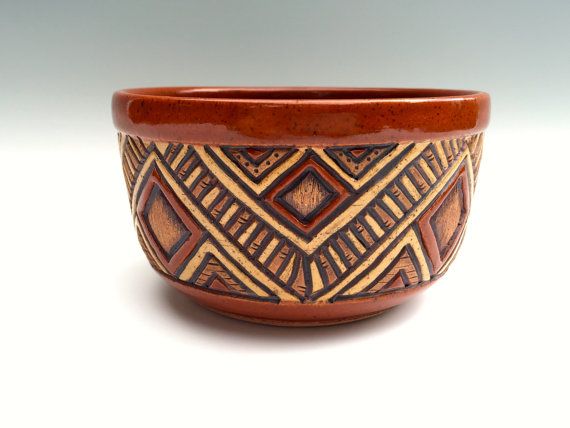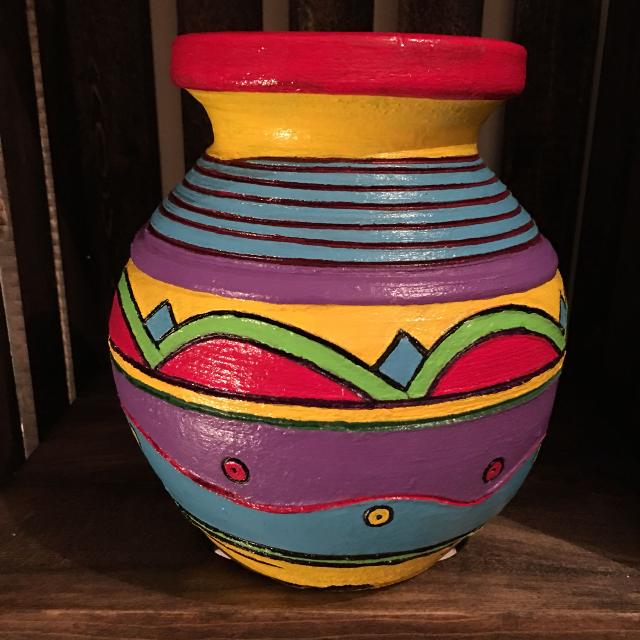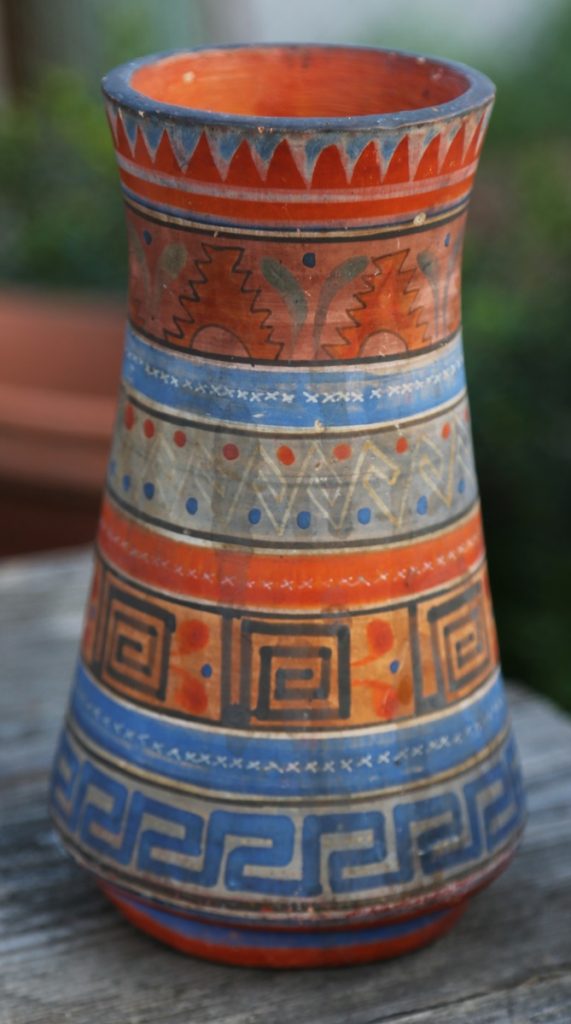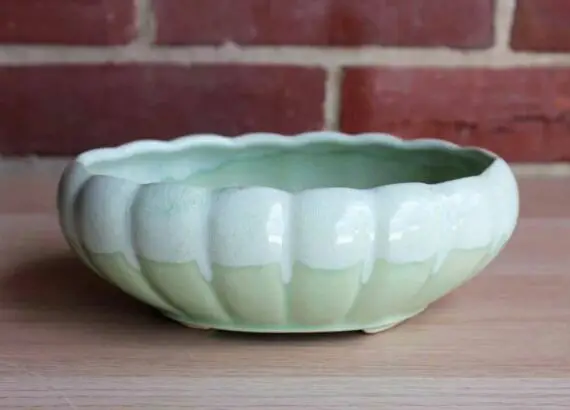Aztec Pottery: How Aztec Pottery Was Made?

It’s no secret that the Aztecs made fantastic ancient pottery. In fact, their pottery was so wonderful that people now still have great admiration for it.
In addition, you can still see actual and replica pottery from the Aztec empire in central Guatemala. Therefore, it’s safe to say that it still has much influence.
So, if you’re interested in learning about the history, designs, patterns, and figures of Aztec pottery, you are in the right place. With that said, continue reading to learn more about this elaborate pottery.
Table of Contents
What is Aztec Pottery?
Aztec pottery is well-known for is its use of geometrical forms. In general, the drawings on these shapes were intricate and had repetitive patterns.

However, as time passed, makers opted to utilize patterns inspired by nature, such as sea creatures and animal figures. Similarly, pottery was used to adorn temples for their gods.
The History of Aztec Pottery
Earlier Aztec pottery designs featured geometric patterns with various colors. However, in the later periods, archeologists discovered that the Aztecs deviated from their original designs to animals and plants.
Nevertheless, symmetry was still a vital element in Aztec design. For instance, their Calendar Stone used circular symmetry to depict the rule of the Five Sun Gods.
How Aztec Pottery Was Made?
Every Aztec village had its own pottery style that depended on the inspiration and materials available to make the design. This resulted in various pottery forms, but the use of orange clay in their works gave all these designs uniformity.
Aside from this, Aztec artisans did not have a potter’s wheel. In fact, they only depended on paying careful attention to detail as they placed layers of clay strips to create their pots. Of course, aside from being beautiful, the pots they created were also functional.
In addition, when fired, white clay used in creating bowls, ladles, mugs, storage bars, pitchers, and other ceramics becomes white.

On the other hand, the black-on-white design came about because of the use of plant and mineral pigments. In this case, these pigments were painted on the white clay before firing.
What Aztec Pottery Was Made of?
Aztecs had an abundant supply of fine and textured clay that turned orange after it was fired. In this case, they did not put this clay into waste and made it into pottery. In fact, until now, handmade pots made from this type of clay are still a big industry in Mexico.
In addition, other items made from clay seen more commonly in temples than homes were ritual vessels, stamps, spiral spindles, stamps, incense burners, and funerary urns. However, there was no evidence showing that they used glazes or a potter’s wheel.
Aside from this, finer-grade pottery with red and orange colors was plentiful. These were made by expert artisans who started as apprentices in pottery.
So, if you see their creations, you will see how these were elegantly and tastefully done, especially when you see the inside of open bowls.
Aztec Pottery Designs and Patterns
In general, the Aztecs used different patterns and styles in their designs. Moreover, since their designs focused on geometry, they were likely to feature long lines connected symmetrically.
In this case, rectangular or circular shapes are the most common Aztec pottery designs. For this, the patterns are created using a particular shape repeatedly until they get their desired results.
Similarly, they also used designs to depict something religious or related to the Mayan gods. In addition, the colors red, orange, black, and white were used to create the pottery designs.

What Aztec Pottery Was Used for?
Back then, all Aztec households, even the poor, had pottery in their homes. In this case, some essential pottery used was a large jar for water storage and some pots to soak maize kernels overnight or cook beans.
Back then, their primary kitchenware was simple and rough and was made by non-specialists. However, they were also the ones who manually created plates, goblets, cocoa jugs, serving bowls, and many others for wealthy families.
The Different Aztec Pottery Figures
The elite of the Tenochtitlan was not satisfied even with the best Aztec pottery; they also wanted objects from Cholula. Cholula, located in the southeast part of the capital, was known as the center for pottery making and artistic culture at that time.
In fact, Bernal Díaz del Castillo wanted his vibrant dishes made in Cholula. In this case, these dishes were used as offerings in burials and for gods.
Aside from that, the Cholula pottery also had many colors: white, blue-gray, yellow, orange, red, brown, and black. In this case, this was a different figure of Aztec pottery since it deviated from the basic two-color design.
Moreover, Cholula artisans also created more complicated pottery figures, such as butterflies, abstract shapes, god figures, stylized feathers, animals, and men. Back then, the style of the drawings was reminiscent of codices.
However, many experts saw changes in Aztec pottery designs from 1350 until the period of the Conquest. They noticed that the figures became more natural impressions from abstract and simple patterns and themes, such as butterflies, fish, insects, and plants.
Aside from this, there were also decorative borders around them, so these figures gave the elite the international design they wanted.
What Aztec Pottery Represented?
The Aztecs gave much importance to the art of ceramics. In fact, specialists were tasked to make ceremonial and luxurious ceramics. Back then, these could be obtained through trade or gifts, so it could be said that this kind of Aztec pottery represented wealth.
On the other hand, ceramics with complicated designs had diverse uses, while functional ceramics such as pots were used simply in households. These were produced together with farming.
Aztec Pottery Museums
Nowadays, Aztec pottery museums have a vast collection from three of the ancient cultures found in South and Middle America. This collection is very different from European societies.
In this case, the pieces were considered dramatic and extensive. Of course, there are also other pieces in the collection, but the ceramics were notably strong.
In this case, one of the finest Aztec ceramic collections outside Mexico is pieces of Aztec pottery from Late Post-Classic Mexico. Then, by studying the different clay samples from various groups of ceramics, a research associate from that museum discovered how trade was done during that time.
Conclusion
Finally, you understand that the use and nature of Aztec pottery were meaningful and functional. In addition, the regarded ceramics were made especially for the gods and designed as tributes to them. Moreover, their designs primarily focused on proportion and symmetry.
In fact, many Aztec artisans were keen on creating these so that their symmetry was apparent in various parts of a city or temple. Lastly, the colors used for Aztec pottery were vibrant, which showed how Aztecs give much value to bright colors.



